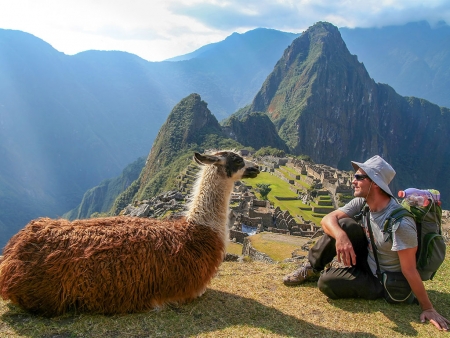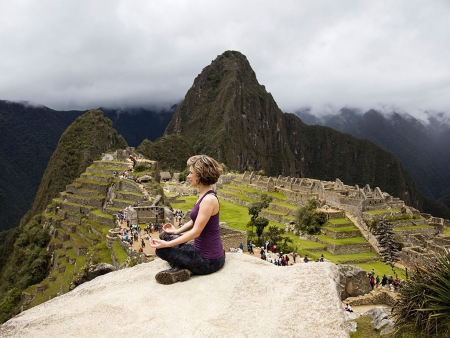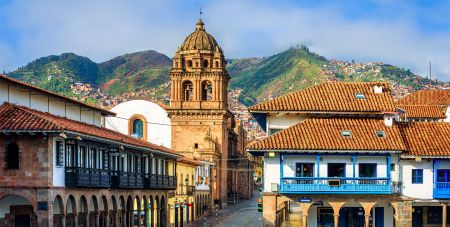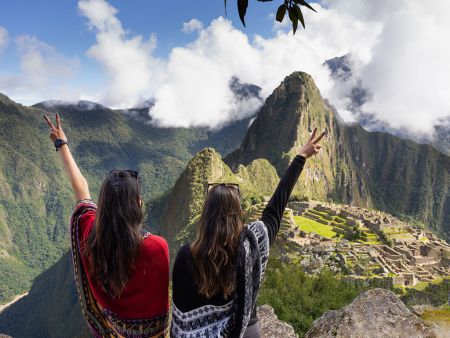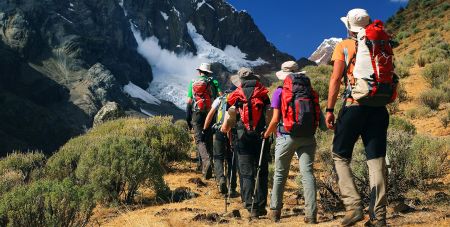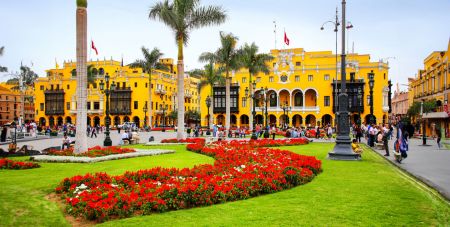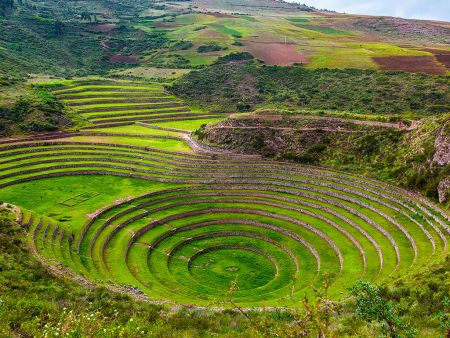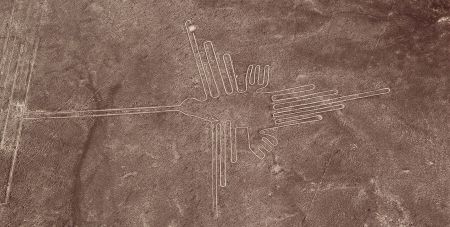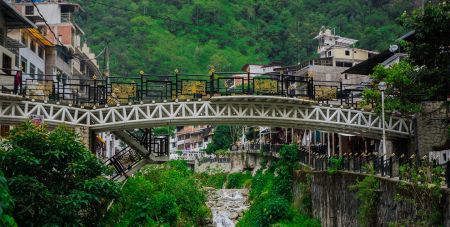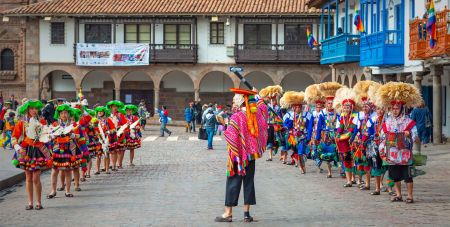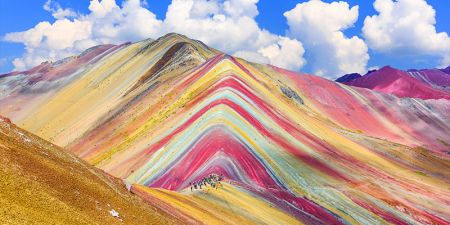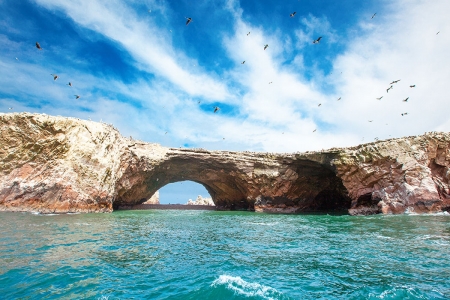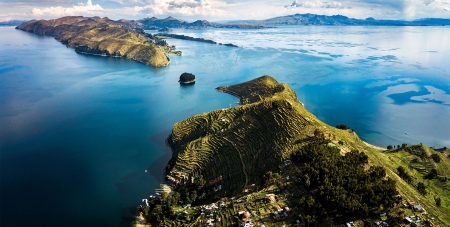Machu Picchu: An Inspirational Guide to the Lost City
Unleash the magic of Machu Picchu: ancient ruins, breathtaking vistas, and a journey of discovery await in this iconic wonder of the world.
.jpg)
Perched high in the Andean mountains of Peru, nestled between the peaks of Huayna Picchu and Machu Picchu, lies the ancient city of the Incas - Machu Picchu. This city, hidden in the clouds, is a testament to the ingenuity, vision, and tenacity of a civilization that flourished in the heart of South America centuries ago. The city's intricate stonework, the precision of its astronomical alignments, and the mystery that shrouds it, continue to captivate and inspire those who venture to its lofty heights.
Machu Picchu, often referred to as the "Lost City of the Incas", was a thriving city, believed to have been built around the mid-15th century. However, it was abandoned about a hundred years later during the Spanish Conquest. Its existence remained a secret to the world until 1911 when it was rediscovered by American historian Hiram Bingham.
The History of Machu Picchu
The history of Machu Picchu is one that is shrouded in mystery. While it is widely accepted that it was the Incas who built this city, much about its purpose, its inhabitants, and the reason for its abandonment remain a mystery. Historians believe that Machu Picchu was built around 1450, during the reign of the Inca emperor Pachacuti. Its construction coincided with the expansion of the Inca Empire, which at its height stretched from Ecuador to Chile.
In the century that followed, Machu Picchu flourished. It was home to hundreds of people, primarily nobles, priests, and chosen women, known as "Virgins of the Sun". The city was a marvel of engineering, with its terraced fields, intricate stonework, and elaborate water distribution system.
However, with the arrival of the Spanish in the 16th century, the city was abandoned. It is believed that the inhabitants of Machu Picchu left the city to avoid the devastation that the Spanish conquest brought to other parts of the Inca Empire. The city remained hidden and forgotten until its rediscovery in 1911.
Understanding the Architecture of Machu Picchu
The architecture of Machu Picchu is a testament to the incredible skill and ingenuity of the Inca builders. Despite the rugged and inhospitable terrain, they managed to construct a city that was not only functional but also harmonious with its natural surroundings.
The city is laid out in a series of terraces, which served multiple purposes. Firstly, they provided flat areas for farming and living. Secondly, they helped to prevent soil erosion and landslides. The terraces were built with a sophisticated drainage system that effectively managed water runoff, ensuring the city's stability.
The buildings in Machu Picchu are primarily constructed from granite, sourced from the surrounding mountains. The stone blocks were shaped and fitted together with extraordinary precision, without the use of mortar. This technique, known as ashlar, resulted in structures that have withstood centuries of weathering and seismic activity.
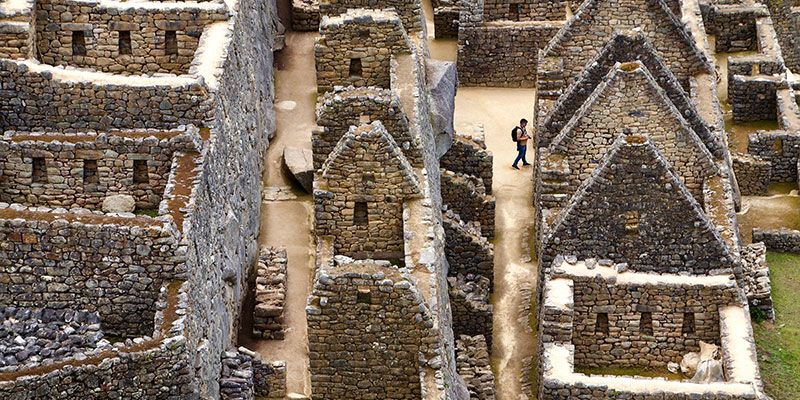
Customize Your Dream Vacation!
Get in touch with our local experts for an unforgettable journey.
Plan Your TripThe Mystery of Machu Picchu's Construction
The construction of Machu Picchu is a puzzle that continues to baffle scholars and researchers. The city's location, high in the Andes and far from any nearby quarry, presents a logistical nightmare. How the Incas managed to transport the heavy stone blocks to the site and then shape and fit them together with such precision is a mystery that remains unsolved.
Some theories suggest that the Incas may have used a system of ramps and levers to transport the stones. Others propose that the stones were shaped in the quarry and then rolled down the mountain using logs. However, these theories remain speculative, and the true methods used by the Inca builders are yet to be uncovered.
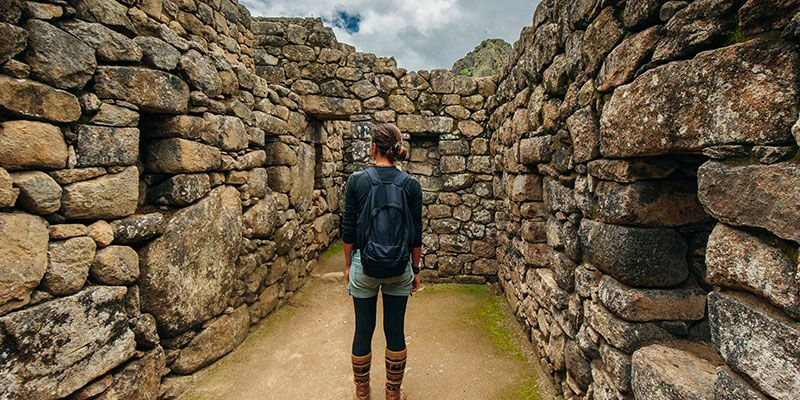
The Mystery of the Lost City of Machu Picchu
The abandonment of Machu Picchu and its subsequent 'loss' is another enigma that historians and archaeologists grapple with. When Bingham rediscovered the city in 1911, it was largely intact. Its buildings, terraces, and even some of its artifacts were well preserved, suggesting a sudden and orderly departure of its inhabitants.
One theory suggests that the city was abandoned due to an outbreak of a deadly disease, possibly smallpox, brought by the Spanish. However, no evidence of such an outbreak has been found in Machu Picchu. Another theory proposes that the city was evacuated due to the threat of a Spanish invasion. Yet, there are no records of the Spanish ever reaching Machu Picchu.
Cultural Significance of Machu Picchu
Despite the mysteries that surround it, the cultural significance of Machu Picchu is undeniable. It is a monumental testament to the Inca civilization, showcasing its architectural and engineering prowess, its understanding of astronomy, and its deep reverence for nature.
Machu Picchu was not just a city, but a sacred center for the Incas. It is believed to have been an important site for rituals and ceremonies, as suggested by the presence of the Temple of the Sun, the Room of the Three Windows, and the Intihuatana stone, which was used for astronomical observations.
Machu Picchu: One of the Seven Wonders of the World
Machu Picchu's grandeur has placed it among the Seven Wonders of the Modern World. This title is not only for its architectural brilliance but also for its rich cultural heritage and its harmonious coexistence with the surrounding natural landscape.
The city's urban layout, divided into agricultural and urban sectors, showcases the Incas' deep understanding of nature and their mastery in integrating it with their way of life. The intricate network of terraces, temples, and astronomical observatories reflect the Incas' advanced knowledge in agriculture, architecture, and astronomy.
Machu Picchu, one of the Seven Wonders of the World, is a testament to the resilience of human spirit and the endless possibilities that arise when man and nature work together in harmony. It's a place where one can experience the thrill of discovery, the joy of exploration, and the awe of standing at the pinnacle of human achievement.
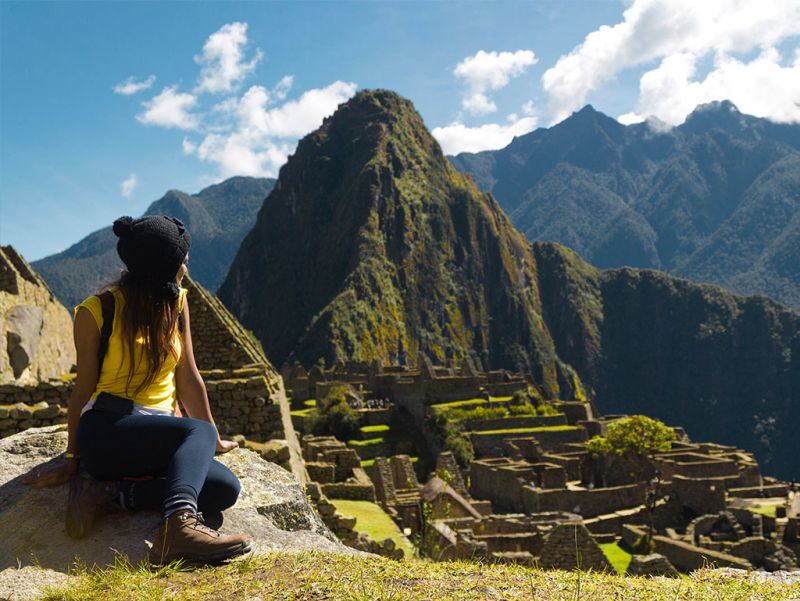
Machu Picchu Today: UNESCO World Heritage Site
Today, Machu Picchu is recognized as a UNESCO World Heritage Site and is one of the most visited tourist destinations in the world. Its iconic status as a symbol of the Inca civilization, its breathtaking location, and the mystery that shrouds it continue to captivate and inspire visitors from around the globe.
However, with increasing tourism comes the challenge of preserving this ancient city. Efforts are being made to limit visitor numbers and promote responsible tourism to ensure that this marvel of the ancient world can be enjoyed by future generations.
Traveling to Machu Picchu: What to Expect
Traveling to Machu Picchu is an experience like no other. As you make your way to the site, whether by train or along the Inca Trail, you will be immersed in the stunning Andean landscape, with its rugged mountains, lush forests, and meandering rivers.
Upon reaching the site, you will be greeted by the awe-inspiring sight of the ancient city, nestled on a mountain ridge, with the mighty Urubamba River flowing below. As you explore the city, walking along its terraces, and through its plazas and temples, you will feel as if you have stepped back in time.
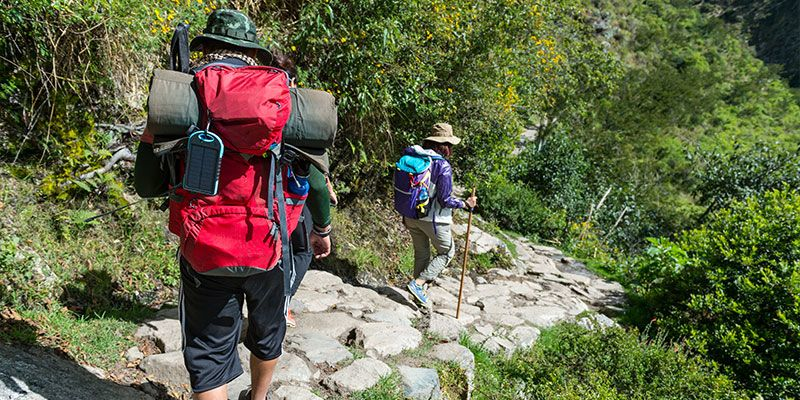
How to Get to Machu Picchu?
There are several ways to reach Machu Picchu. The most popular is by train from the city of Cusco to the town of Aguas Calientes, located at the foot of the mountain. From there, you can take a bus up to the site. Another option is to hike the Inca Trail, a 4-day trek that takes you through the Andean landscape and culminates at the Sun Gate, with a stunning view of the city.
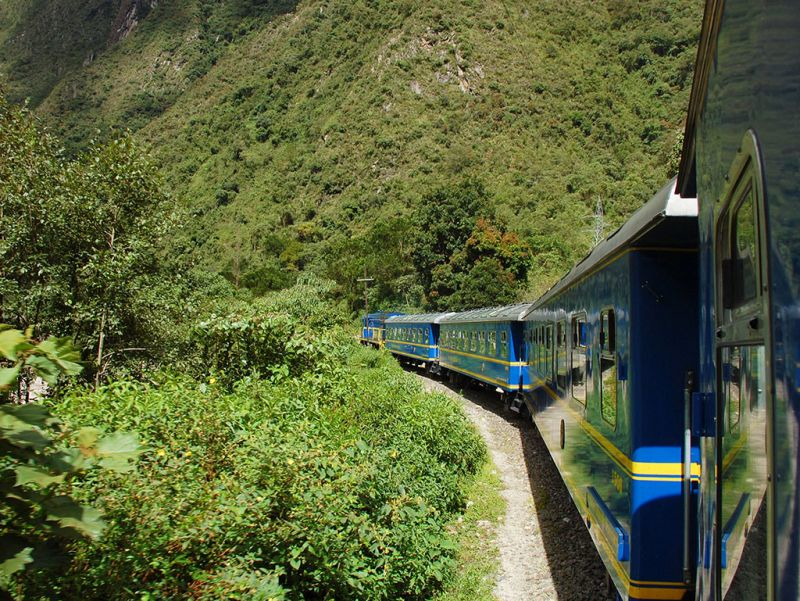
What is the Best Time to Visit Machu Picchu?
The best time to visit Machu Picchu is during the dry season, from May to September. During this period, the weather is generally sunny and dry, making it ideal for exploring the site. However, this is also the busiest time of the year, so be prepared for crowds.
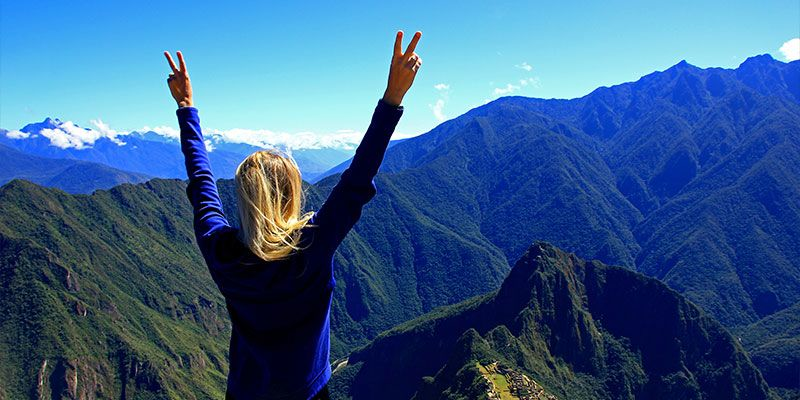
Essential Tips for Your Machu Picchu Trip
When planning your trip to Machu Picchu, there are a few essential tips to keep in mind. Firstly, remember to book your tickets in advance, as visitor numbers are limited. Secondly, wear comfortable shoes and bring a hat, sunscreen, and water, as the sun can be intense. Lastly, take your time to explore the site and soak in the incredible atmosphere of this ancient city.
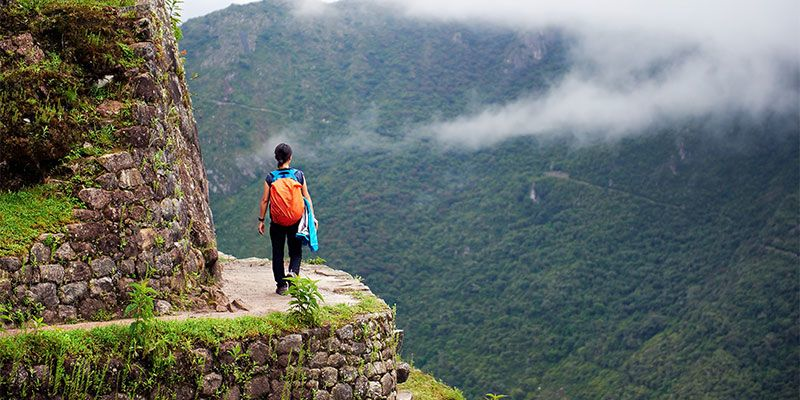
The Inspirational Impact of Machu Picchu
Machu Picchu has a profound inspirational impact on those who visit it. Its breathtaking location, the ingenuity of its construction, and the mystery that surrounds it, all contribute to a sense of awe and wonder. It serves as a reminder of the incredible achievements of the Inca civilization and the enduring power of human ingenuity and determination.
Interesting Fact about Machu Picchu
1. Machu Picchu is that despite its location high in the mountains, it was built without the use of wheels. The Incas did not use the wheel in any of their construction. Instead, they relied on manpower and simple tools, which made their achievement all the more remarkable.
2. Hidden Gem: Machu Picchu remained unknown to the outside world for centuries, tucked away in the Andes Mountains until its rediscovery in 1911.
3. Spectacular Views: The panoramic vistas from Machu Picchu are breathtaking, with the surrounding mountains and the Urubamba Valley providing a stunning backdrop.
4. Hiking Trails: The most popular trail to reach Machu Picchu is the Inca Trail, a challenging but rewarding trek through diverse landscapes and ancient ruins.
5. Alternative Routes: Apart from the Inca Trail, there are other lesser-known routes like the Salkantay Trek and the Lares Trek that offer unique and picturesque journeys to Machu Picchu.
6. UNESCO Protection: Machu Picchu is a UNESCO World Heritage Site and is protected to preserve its cultural and historical significance for future generations.
7. Sunrise and Sunset: Witnessing the sunrise or sunset over Machu Picchu is a magical experience that brings out the ethereal beauty of this ancient site.
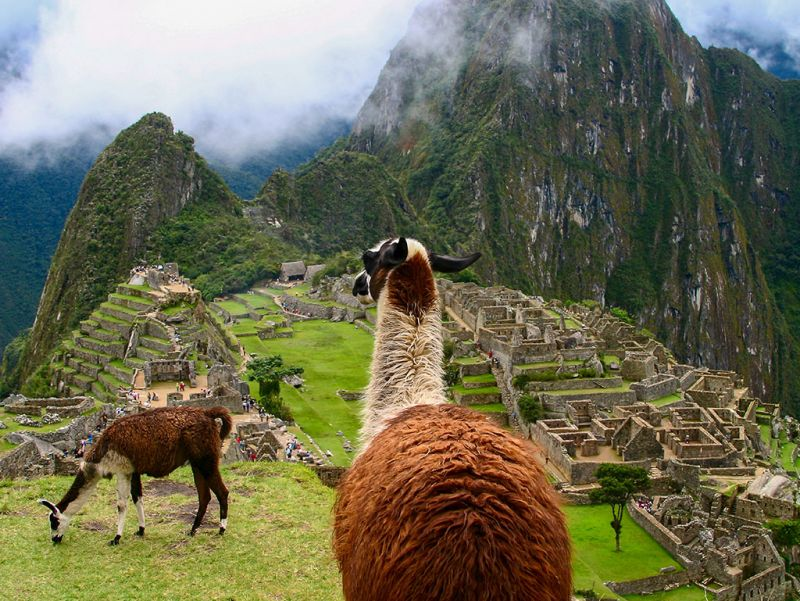
The Enduring Allure of Machu Picchu
The enduring allure of Machu Picchu lies in its ability to inspire and captivate. It is a testament to a civilization that once thrived in the heart of South America and a monument to human creativity, tenacity, and reverence for nature.
Whether you are a history buff, an avid traveler, or simply someone in search of inspiration, Machu Picchu is a destination that is sure to leave a lasting impression. So why wait? Start planning your trip today and explore our Peru vacation packages to embark on an unforgettable journey to the lost city of the Incas.

